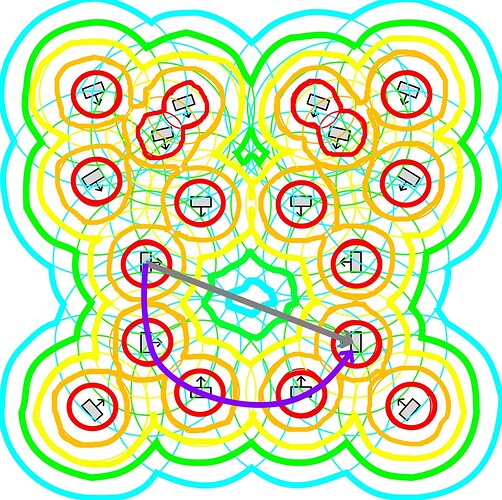Hello,
I am planning a set which will be played on an acousmonium (loudspeaker orchestra). I plan to use the KNN algorithm (except if there’s a better solution). I am looking for a way to automatically adapt the positions of my sounds to avoid places away from loudspeakers.
In the drawing below grey rectangles represent loudspeakers. The colored curves represent the distances. Red is the closest distance to a loudspeaker or several loudspeakers. Blue is the farthest. For instance, the grey arrow is a typical trajectory. What I want is to transform it to become the purple arrow. This way it would prevent the distribution of the sound on all the surrounding loudspeakers which occurs when the trajectory is at half-course, especially in the green or blue zones.
Is there a feature in Spat5 to address this? Or a simple mathematical tool I could use? In some way, it’s as if each speaker created a gap in a plane and therefore the closer you are to a speaker the lower you are. So, if we imagine that the sound would be like a marble moving on this plane, naturally it would follow the easiest path and would be redirected towards the lowest points as if we were going from valley to valley and avoiding the passes and the high mountains.
Thank you in advance.

